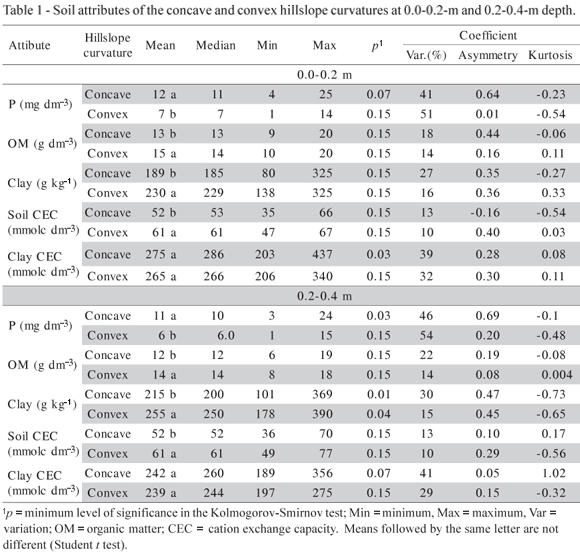Hillslope curvatures are associated with specific environments that correlate to chemical and mineralogical attributes of soil, so determining specific management zones. Phosphorus is one of the main limiting factors to the development and longevity of sugarcane. The type and the mineralogical constitution of the clay fraction play an important role in the phosphorus (P) adsorption of soil. High proportion of gibbsite (Gb) in soil may be the major responsible for P adsorption. The relationships among spatial variability as a function of hillslope curvature, the proportion of kaolinite (Kt) and Gb, and phosphorus adsorption were evaluated in an Alfisol cultivated with sugarcane. Two plots of 1 ha of a concave and a convex hillslope area were selected and 121 samples were collected in each area. The maximum P adsorption was determined in six samples taken randomly in each area. Data were submitted to descriptive statistical and geostatistical analysis. The lowest average values of available phosphorus were found in the convex area. In this area, the proportion of gibbsite, expressed by the values of the ratio [Gb/(Gb + Ct)] and the values of maximum adsorption capacity of phosphorus were higher than in the concave area.
Brazil; gibbsite; kaolinite available phosphorus; geostatistics; soil-landscape relationships





